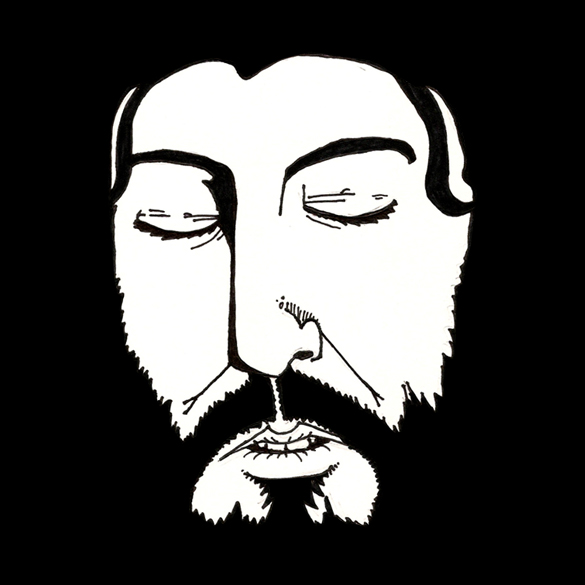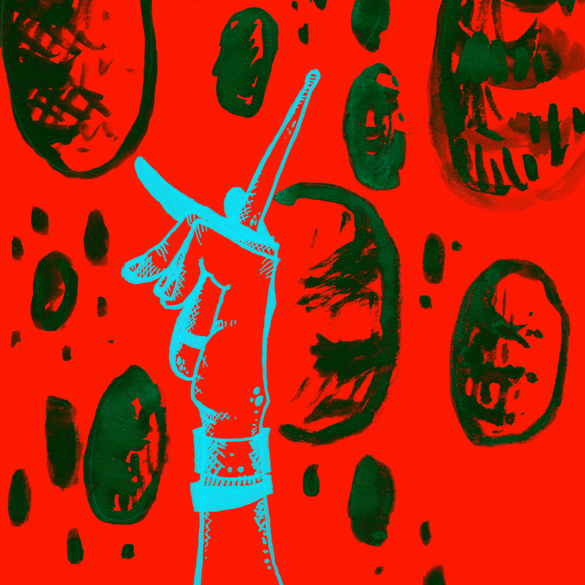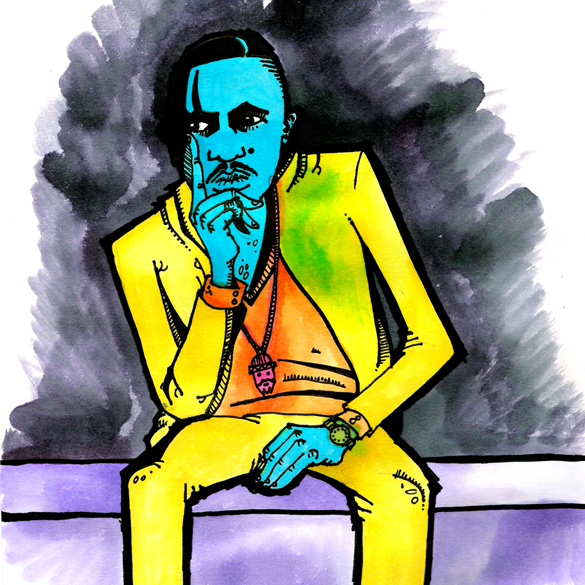Paul McCartney is that one artist where, even in the depths of his discography, I feel completely at home and safe. By now, all of his music, from The Beatles to his interesting 80s decisions to his weird classical wanderings, is well-known territory. It’s impossible to reach this kind of familiarity with every artist, and at this point, it would be too late for me to choose again and get really into Neil Young or Tom Waits or something. And I’m glad I’m stuck with Paul as my musical husband forever. He’s got some really beautiful moments in his discography, as well as some appallingly bad ones. I really owe a lot to him, because as a young music fan, trying to find those moments of brilliance taught me so much patience.
I discovered the Beatles in sixth grade, but I really started listening to Paul’s solo work the summer after freshman year of high school. My life back then was nothing much to comment on. When I wasn’t at swim practice, I was listening to music, or discussing it online with strangers I met through an early blogging site called LiveJournal (stereotypically home to angsty, “emo” kids, but contained a surprising number of Beatles fans as well). I got in a lot of arguments online, especially about the breakup of the Beatles, to the point where I would get legitimately upset over it. I think this is why I like studying history even now, because I could get surprisingly personally involved in something that logically should not have affected my life at all. I always thought Paul needed defending at those moments. While he took the legal action to break up the Beatles officially, it was as painful for him as it was for any other person involved, if not more.
It’s not very interesting being a fifteen-year-old with no ability to drive, with most of her friends at summer camp. During those long days spent making and commenting on posts about things as detailed as “Favorite Beatles Photo Shoot” and “A List of Songs Where One of The Beatles Is Saying Weird Things In The Background,” I would almost completely lose myself in this other world. All that really mattered about me was how much I knew about the Beatles. And I don’t want to sound like a stalker fan, but I felt like I understood Paul more than any of the other Beatles. He never seemed to tolerate much bullshit, especially during the era of the Beatles breakup. At the same time, he seemed like the most idealistic of the Beatles. He was the one who wanted to keep the band together as long as possible, only realizing the ship was sinking a bit too late. He was the one who proposed and led ambitious projects like the filming of Magical Mystery Tour and Let it Be.
I have heard similar stories from other music fans of some formative time where they were so hungry to hear new music that they would just spend hours and hours listening to everything they could find. Music was so immediate for me, so unavoidably important, though I had little experience of my own to bring to the recording. I learned to appreciate albums like Ram as a full artistic statement and pick out the little moments that meant the most to me. This album’s biggest hit was “Uncle Albert/Admiral Halsey,” which somehow hit number one in 1971, and has since been largely left off the list of Great Paul McCartney Songs. There aren’t any straight-up, Wings-esque hits on this album. Instead, we get Paul banging on a piano and screaming nonsense in “Monkberry Moon Delight,” or including what may be the first gunshot sample on the album’s accompanying single, “Oh Woman, Oh Why.” One of my favorite moments on this album is “Ram On” and its reprise, with their swirly pianos and innocent lyrics (“Give your heart to somebody/soon, right away”). I remember being astonished with myself for guessing correctly that the title was a reference to one of Paul’s old stage names, Paul Ramon.
With songs like “Heart of the Country,” the intimacy of this album is deliberate, countering the near-decade of international overexposure Paul dealt with during his time with the Beatles. There are a lot of pictures of Paul wearing wool sweaters and holding sheep from this time period. It’s interesting that Paul produced Ram himself, while John stuck with Phil Spector for his first two solo albums, the producer responsible for the gloopy over-orchestration of Let it Be.
This album’s predecessor, McCartney, came from a dark place. Recorded during the breakup of the Beatles, Paul retreated to his London home with a tape recorder and came out with what I believe should be re-interpreted as an early lo-fi classic. At the time, he was drinking heavily, engaged in both public and private battles with his former fellow band members. In a recent interview with Pitchfork, Paul spins the story of Ram’s recording into one of those legendary recording experiences, like Bon Iver and his cabin in Wisconsin. For Ram, Paul and his new wife, Linda, had finally extricated themselves from the messy legal dealings with the breakup of the Beatles, and retreated to a farm in Scotland. Paul speaks of the freedom that this style of living gave him. He almost enables the current crop of critics treating this album like it’s a zany romp in the country and not much else.
Beneath this album’s charming, pastoral surface, though, there are major tensions. Paul was simultaneously trying to escape the Beatles’ legacy, while realizing that he would not be able to excise any of his demons without facing that legacy head-on. The underlying struggle of these post-Beatle years is evident on the track, “Heart of the Country.” It may seem like a plodding, silly song about, well, living in the heart of the country. But nobody makes a song like that unless they’re trying to contrast it with something. That farm in Scotland, it’s where “the holy people grow.” Not in London, where John and Yoko were still living their fast-paced, media-saturated lives. The stress of those final years with the Beatles is clear when Paul simply states, “I’m gonna get me a good night’s sleep.” It seems as though all he wanted was a break, a respite, enough time to catch his breath and figure out who he was, apart from being an ex-Beatle.
I bought this album on vinyl while on vacation with my family in San Diego the summer before sophomore year of high school. I didn’t even have a turntable back then. My parents never collected vinyl or got into the Beatles, so they probably didn’t fully understand my penchant for wandering into record shops by myself. I started out buying used records because I wanted to be the second owner of something that had been loved and listened to by someone else before me. As an extremely self-conscious fifteen-year-old (of course wearing one of my two Velvet Underground t-shirts), it also let me get away from my family for just a few minutes. Back then, those shops felt like a relic from an earlier era I desperately wanted to experience. And, for the first time, I was around other music fans who felt the same way about those physical copies of the albums as I did. The owner of the record shop gave me a copy of Venus and Mars for free along with Ram, maybe because the copy was scratched and old, but maybe because I seemed like the biggest nerd of all time.
I didn’t get to play the record until Christmas of my senior year, when I received my first turntable. And, holding that physical album, I could finally see a distinct separation between the two sides of the album: the best representation of all the contradictions within Ram. The first half of the album is loaded with songs that slyly or not-so-slyly reference the other Beatles, especially John. Paul famously claimed that only one line on the album, “too many people preaching practices,” was a direct attack on his former songwriting partner, but there is an astonishing amount of venom packed into “3 Legs” and “Dear Boy.” Once he’s gotten past that, though, he shows us that he’s in a better place. This country feel is intentional, it works. Paul’s heart is in the country, he’s got his long-haired lady, and he’s finally escaped the pressures of being a Beatle. The album is irreverent, purposefully taking a left turn into pastoral pop songs and straight silliness. There is a joyfulness that radiates through side two. Paul veers really close to the line between disgusting couple and adorable proto-indie pop, especially with the song “Long Haired Lady.” Ram was really a group effort, with Linda learning keyboards and how to sing with Paul. She’s there in the background of the songs, singing in her sweet, off-kilter way.
This album taught me that music could have a sense of humor. I tend to take things I’m passionate about rather seriously, and it’s completely impossible to take in all of Ram that way. Songs like “Monkberry Moon Delight” and “Uncle Albert/Admiral Halsey” inspired in me a love for artists who play with the sound of words rather than putting all their stock in the meaning of the lyrics. At the end of “Uncle Albert/Admiral Halsey,” Paul repeats the lines, “live a little/be a gypsy/get around/get your feet up off the ground/live a little/get around.” He sings these so quickly that the words mean nearly nothing, and the contrast between the alliteration of “live a little” and the harder sounds of “be a gypsy, get around” becomes the focus of the section. For all the claims that this album lacks variety and interest, that little five-minute pop suite is followed by the straight-up rocker, “Smile Away,” where Paul morphs his voice into a throaty shout.
I think I really benefit from having taken in this album as an idealistic teenager, not as an analytical rock critic looking back on old masterpieces for their influence on modern indie music. There’s nothing restraining me from feel almost giddy again when hearing songs like “Back Seat of My Car,” which builds into this all-out, rocking crescendo by song’s end. It’s way too early in my life for this kind of nostalgia, but I turn right back into my fifteen year old self, sitting in a swimming t-shirt in front of my computer, instant messaging one of my friends something like, “Paul is SO COOL. And his voice is AMAZING.”
Re-releases mean a lot of things to a lot of people. For the rock critics, it gives them a chance to rewrite history another time, to absolve their predecessors from calling this album “muzak” when it came out. It’s important to remember that this album did come from a specific moment in Paul’s career separate from the Beatles, when he was deliberately trying to figure out his personal vision as an artist. It also brings me back to a time when I was just learning how to truly appreciate those artists.
I have this theory that the music anyone is interested in as they grow up is just a different, perhaps more complex or mature, version of the music they heard from the ages of 13 to 16. While exploring Paul McCartney’s back catalog that summer, I also moved on to the Velvet Underground, the 13th Floor Elevators and other 60s garage bands. The next year, I discovered Can, Brian Eno, Patti Smith, and Captain Beefheart, thanks to those old LiveJournal posts. My friends introduced me to Arcade Fire and The Decemberists. Many of these acts are like Ram in that they have an idealistic surface with a complicated interior, but I always returned to my first love.



Fantastic piece.
“Ram” is certainly one of the records that you can use to argue that the Beatles continued to be fantastic after their breakup. I go back and forth myself, arguing in my head about McCartney’s best solo record. At some level, “Ram” is it, though–you seem like you could get in this argument–I think my own favorite is Venus and Mars, with McCartney II high on the list partially because it was the McCartney record I first got when it was brand new but also because it’s an exceptionally interesting record.
Yes, it remains a cliche, but one cannot repeat that McCartney deserves more respect often enough.